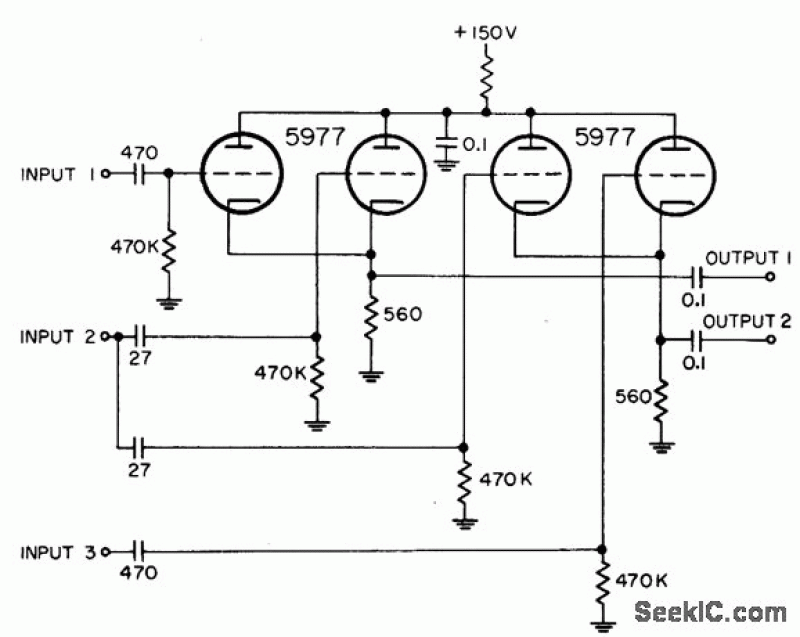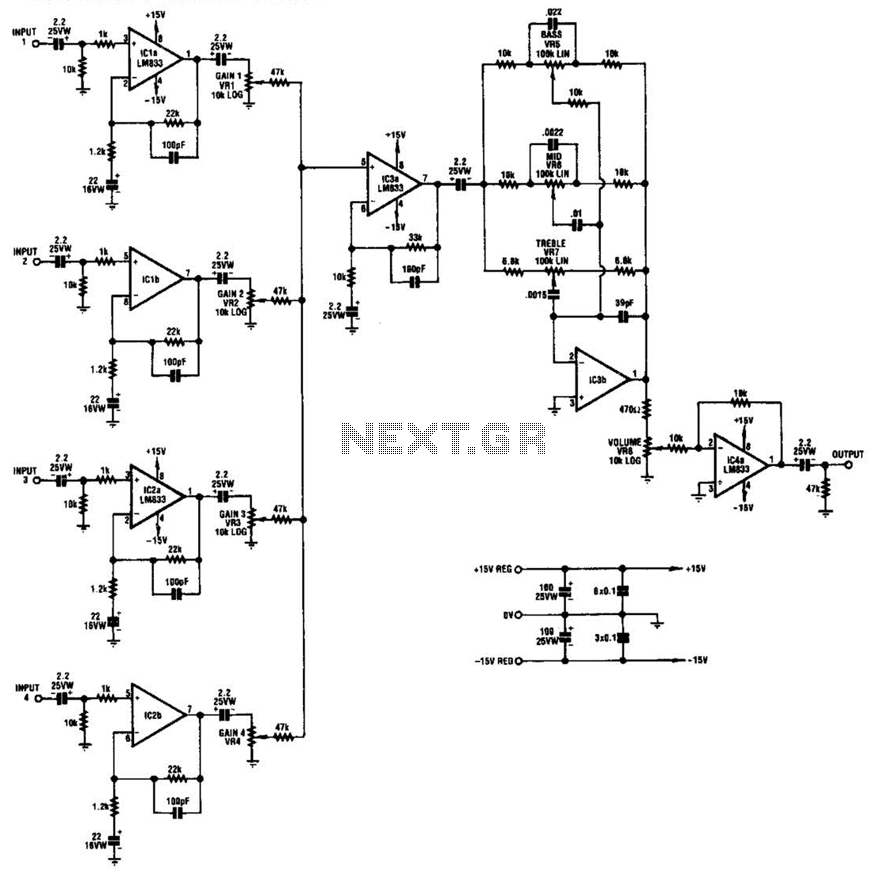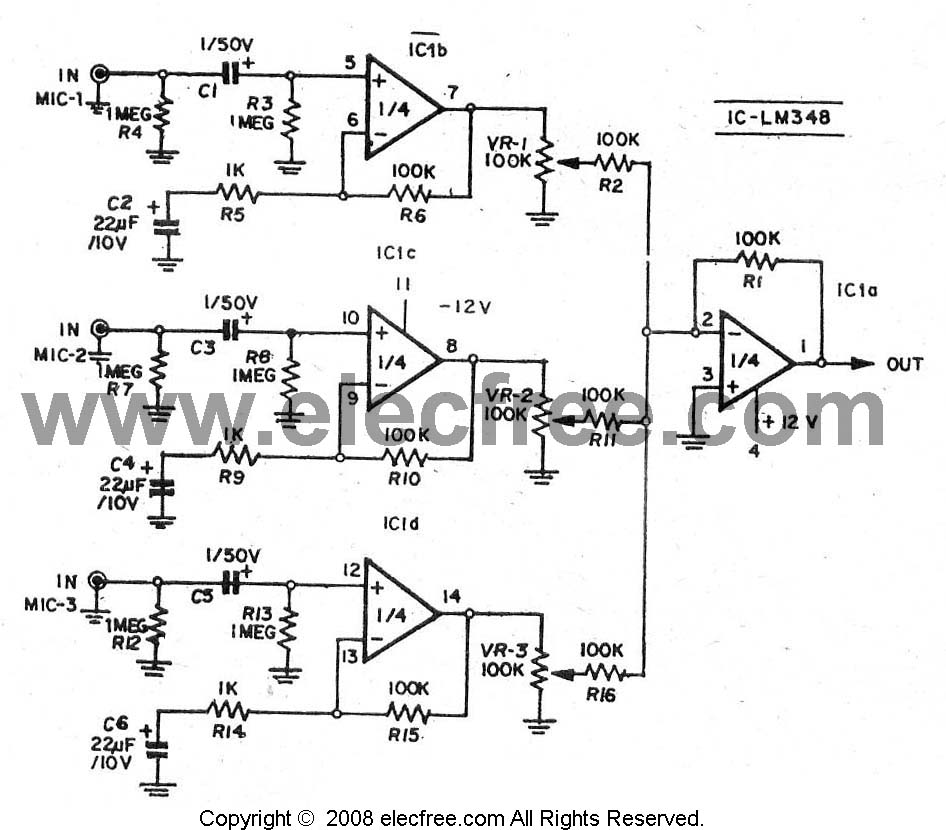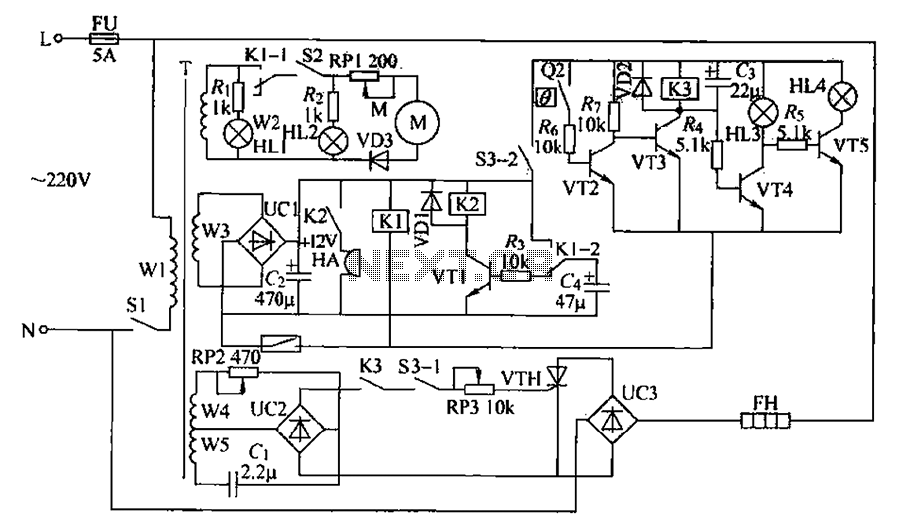
Hybrid mixer
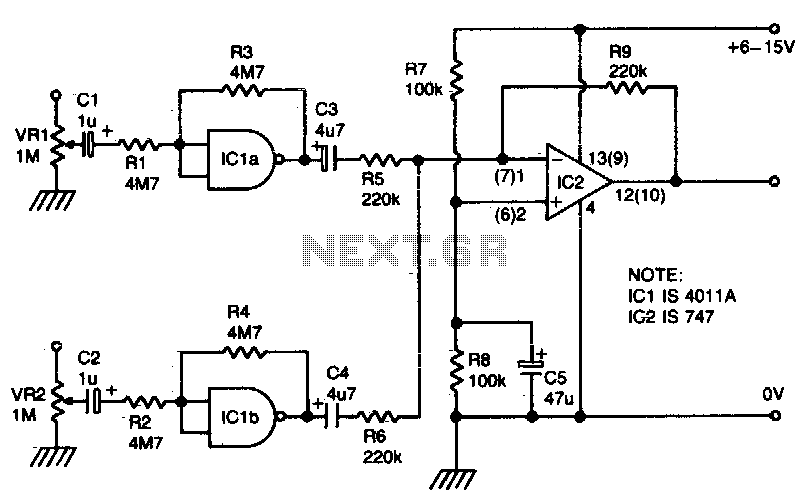
ICla and IClb are biased into the linear regions by resistors R3 and R4. (IC1 must be a 4011A). The outputs from the gates are combined by operational amplifier IC2, which provides a low impedance output.
In this circuit description, ICla and IClb refer to the inputs of a digital logic gate configuration where the 4011A integrated circuit (IC1) serves as a quad two-input NAND gate. Resistors R3 and R4 play a crucial role in biasing these inputs into their linear operating regions, ensuring that the gates function effectively without entering saturation or cutoff states. The proper biasing is essential for maintaining linearity, which is vital for the subsequent processing of signals.
The outputs from the gates are then fed into operational amplifier IC2. This op-amp is configured to combine the outputs from the digital gates, and its design is optimized for low output impedance. The low impedance output is critical for driving subsequent stages of the circuit, allowing for better signal integrity and reducing the impact of load variations on the output voltage levels.
The configuration of the circuit should ensure that the feedback and gain settings of the operational amplifier are appropriately adjusted to meet the required performance specifications. This might involve selecting suitable resistor values for the feedback network, depending on the desired gain and bandwidth characteristics of the op-amp stage. The overall design should also consider power supply requirements for both the digital and analog sections to ensure stable operation. Proper grounding and decoupling techniques are also recommended to minimize noise and interference within the circuit.ICla and b are biased into the linear regions by R3 and R4. (ICI must be 4011A) Outputs from gates are combined by op amp IC2, which provides low impedance output.
In this circuit description, ICla and IClb refer to the inputs of a digital logic gate configuration where the 4011A integrated circuit (IC1) serves as a quad two-input NAND gate. Resistors R3 and R4 play a crucial role in biasing these inputs into their linear operating regions, ensuring that the gates function effectively without entering saturation or cutoff states. The proper biasing is essential for maintaining linearity, which is vital for the subsequent processing of signals.
The outputs from the gates are then fed into operational amplifier IC2. This op-amp is configured to combine the outputs from the digital gates, and its design is optimized for low output impedance. The low impedance output is critical for driving subsequent stages of the circuit, allowing for better signal integrity and reducing the impact of load variations on the output voltage levels.
The configuration of the circuit should ensure that the feedback and gain settings of the operational amplifier are appropriately adjusted to meet the required performance specifications. This might involve selecting suitable resistor values for the feedback network, depending on the desired gain and bandwidth characteristics of the op-amp stage. The overall design should also consider power supply requirements for both the digital and analog sections to ensure stable operation. Proper grounding and decoupling techniques are also recommended to minimize noise and interference within the circuit.ICla and b are biased into the linear regions by R3 and R4. (ICI must be 4011A) Outputs from gates are combined by op amp IC2, which provides low impedance output.

